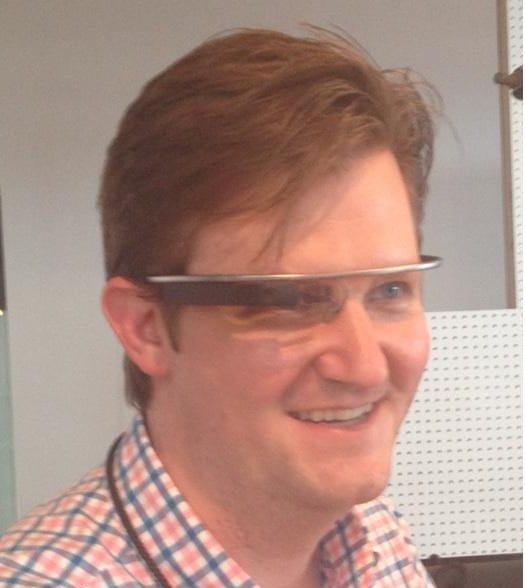 I was recently honored to be selected as a Google Glass Explorer from my entry for #IfIHadGlass. Disclosure: I own Google stock. I plan on using Glass at DePaul where I’m an Adjunct teaching a graduate class in social media to graduate PR and Advertising students. After being notified 5 months earlier, I finally got the opportunity to pick up the device at Chelsea Market in New York City. Here are my insights and observations after using them for a short time.
I was recently honored to be selected as a Google Glass Explorer from my entry for #IfIHadGlass. Disclosure: I own Google stock. I plan on using Glass at DePaul where I’m an Adjunct teaching a graduate class in social media to graduate PR and Advertising students. After being notified 5 months earlier, I finally got the opportunity to pick up the device at Chelsea Market in New York City. Here are my insights and observations after using them for a short time.
Top Insights:
- Google Now and predictive content is the future.
- Wikipedia and Knowledge Graph are critical for accuracy on wearable tech.
- First Person Point of View Video is Fun.
Google Now is a Killer App
Google Now powers the cards that show up on Google Glass. It delivers personalized content through “cards” BEFORE YOU ASK FOR it and has been available on mobile for some time. If you aren’t using it, stop what you’re doing and use it now. On Glass, Google Now delivers these cards to you as you need them based on your location, upcoming activity, and past searches.
The basics of Google Now (weather, flight information, public transit schedules) are life transforming. On a recent trip to Berlin, I stepped off the plane to be greeted with cards for a German/English translator, Dollar/Euro convertor, and the local time back home in Chicago. I didn’t ASK for any of these, they were given to me. It’s incredibly powerful.
The advanced features of Google Now are business transforming. I had anxiously awaited the release of the video game SimCity only to be disappointed to learn the initial release in March was only for PC. The Mac version wouldn’t be until much later. So, I had forgot about it and moved on to other things.
Imagine my surprise when Google Now reminded me that SimCity was now available on Mac 2 days before it was released. I didn’t’ ask for that information, but it knew I needed it. It’s this type of information that will lead to sales.
Wikipedia Accuracy is Critical
A search on Glass returns information from Google’s Knowledge Graph. So, if you say “What was that movie where Jim Carrey lost his memory?,” you will see a brief card that says “Eternal Sunshine of the Spotless Mind.” Most of my early searches returned knowledge graph information from Wikipedia.
We ran some test searches for clients and various people. Some were perfect, others had glaring inaccuracies. Jaw dropping inaccuracies that I can’t name…but were unbelievable.
Most of the queries we ran had information from Wikipedia, so the big takeaway is how to get that information correct. This has long been the struggle between communications departments and the Wikipedia community, but as wearable tech becomes more adopted then more people will need accuracy on these devices.
First Person Point of View Video is Fun
The most fun I’ve had with Glass is taking Videos doing fun things. Looking back to some of the early Glass videos, you can see that Google felt the same. We took a soccer ball to Central Park to get some video and I also filmed my 3-year-old going down a slide at a street festival in Chicago.
While technology to take these videos has existed for a while, the integration of sharing with your Circles on Google+ instantly makes the 1st person point of view. I love being able to instantly share these moments with family and friends, rather than the whole public, and I know I don’t need to worry about oversharing because my close circles CRAVE photos of my kids.
The other interesting observation is that my 3-year-old and 15-month-old DO NOT KNOW that it is a camera. Therefore, they act very natural which results in much more authentic photos. As a father, I love this! I feel like it’s easier to capture special moments and share them.


